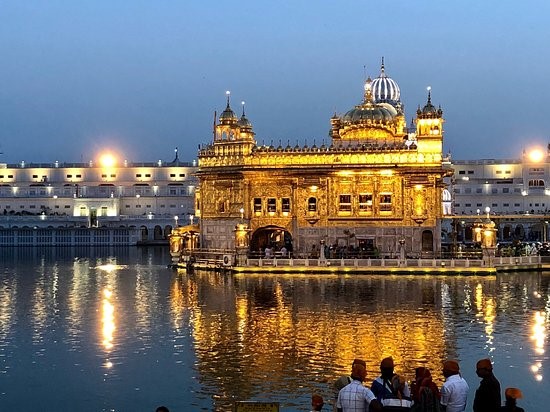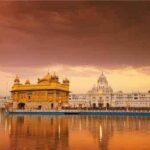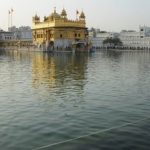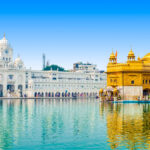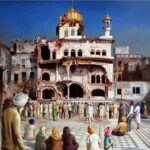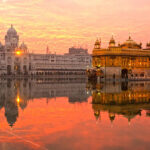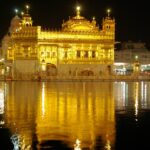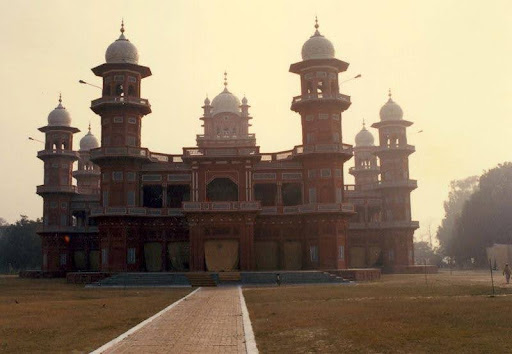The Amritsar walled city, also familiar as the Land of Values (Sifti Da Ghar), has had its share of bad and good times. It lost its architectural magnificence to unplanned extension.
Though, the Punjab gov. tries to bring to life the ‘heritage’ value of the Guru Ki Nagri by building Heritage Street, the central character of Amritsar lies down in its by-lanes and narrow lanes of the walled city.
Some people identify how the holy city has transformed. Their eyes often light up in memory. But with huge sadness, they also recollect the trial out times of Operation Bluestar.
“In Oldtown, humans greet and meet each other with friendliness. Everything is present in the city,” she says. Warmness is where the walled city grooves.
Bazaars and Katras: These areas around the Golden shrine are the main trading hubs. These markets, constructed over the years, are a shoppers’ charm. Guru Bazaar situated between Guru Ka Mehal and the Golden Temple is popular for silver and gold trinkets manufacturing. Similarly, Pandiyan Wala Bazaar is a familiar utensil market while Mishri Bazaar is popular for sugar toys (Khand De Khidone). The place is also familiar with dry fruits.
The old city was split into katras which were govern by Sikh generals. Some of the katras are Katra Dullo, Katra Safed, Katra Karam Singh, Katra Jaimal Singh, Katra Kanhaiya, Katra Baggian, Katra Sher Singh and Katra Ahluwalia to name a few.
Famed eateries: Amritsar is globally familiar for its delicacies. Popular dishes like Amritsar Kulcha, Bhathura Chana, Lassi, Puri Chana, Dal Makhani, non-vegetarian foods, and Phirni, including mutton tikka and fish chicken, besides homemade pickles, rabri, and sharbat.
When it comes to Amritsari meals, who might fail to remember the name of over century-old Kesar Da Dhaba situated close by to the Golden Temple. For vegetarian travelers, visiting the Dhaba is a must thing. Among others is old Bharvan Da Dhaba close by Darbar Sahib, Kundan Dhaba on Albert Road, and Beera Chicken and Makhan Fish. Popular Gian di Lassi closeby Regent Theatres and Ahuja Lassi at Dhabi Khatikan are in demand— the crucial joints.
Who constructs Golden Temple?
The Golden Temple or good to say Harmandir Sahib, in Amritsar, Punjab, India, c. 1870s. The foremost Harmandir Sahib was constructed in 1604 by Arjan, the fifth Sikh Guru, who figurative way had it placed on a lower level so that even the respectful had to step down to enter it.
Who set up the Amritsar?
Sri Guru Ramdass Ji
Why Amritsar is familiar with Sifti Da Ghar?
A rough-cut definition of Amritsar is a pool of medicinal, pious, clean, and pure water. Sift as per the stands for Praise, Adorable, and Appreciation, … So Amritsar – Sifti Da Ghar denotes – The adorable home of the Pool with medicinal, pure, and pious water”.
Is Familiar as Harmandir Sahib situated in Amritsar?
Harmandir Sahib, Harmandir also enchanted Harimandir, also denoted as Darbar Sahib (Punjabi: “Sacred Audience”) or Golden Temple, house of worship and the chief gurdwara, of Sikhism and the Sikhs’ most significant pilgrimage site. It is situated in Amritsar city, Punjab state, northwest India.
Who constructs Harmandir Sahib in Amritsar?
Harmandir Sahib, located in Amritsar, Punjab, was constructed by Sikhs fifth guru, Guru Arjan Dev Ji in the sixteenth century. It is located in the mid of a lake or temple tank familiar as ‘Sarovar’.
Can anyone live in Golden Temple(Amritsar)?
Any person does stay for free in shrine complex, a monk might see us walking with bags and took us to the boarding house housing denoted as “Guru Arjan Nev Diwas”, plain living quarters with a shared restroom reserved for visitors, you are permitted to stay here for free for 3 days.
How does the Golden Temple welcome all travelers?
Admirers bathe in Golden Temple’s holy pool. All tourists should remain barefoot, and everyone passes through an unconnected foot-washing pool before entry. Temple people disperse out water from the pool surrounding the shrine. The water is examined holy, and travelers take-home bottles for health and purification.
Which town is familiar with Sifti Da Ghar?
City of Amritsar
The walled city of Amritsar is also signified as Sifti Da Ghar (Land of Values).
Who was the Sikhism founder?
Does anyone visit the Golden Temple?
There is Nothing like entry fees, You do keep your shoes and travel bags in the cloakroom for free! You do even carry a phone, digital camera inside the temple! This kind of stuff only happens in Amritsar!
Do I wear shorts in Gurudwara?
Only kids (up to the age of 10 must be fine) do wear shorts usually but adults both women and men are expected to cover up their entire bodies. But the head should be covered at all times. Women do wear long skirts, traditional long dresses, and clothes that cover up the legs.
Do we wear black in Gurudwara?
There is no particular guideline regarding what type of clothes one must be wearing while entering a Temple or to say Gurudwara. It does not matter as long as the clothes are decent and the head is covered
Can anyone go to gurudwara without bathing?
Gurdwaras might be surrounded by fountains, or have a moat utilized by pilgrims for bathing. There may be a flag marked with the symbol of the Sikh coat of arms. The one required attribute is the installation of the Sikh Scripture, Siri Guru Granth Sahib.
Is dress permitted in Bangla Sahib?
Travelers to the Bangla Sahib are necessary to dress humbly and to keep their heads covered at all the timeline when inside the temple. Worshippers and Tourists are necessary to eliminate their shoes before entering the place. Opening Closing Time Open 24 hours all weekdays.
Who had written Guru Granth Sahib?
Guru Arjan
Why was the Golden Temple developed?
It was constructed up as a worship place for all religions and is regarded as the holiest Sikhism Gurdwara. The emblematic openness of the Sikhs is appeared by four entrances utilized to get into the Gurdwara.
